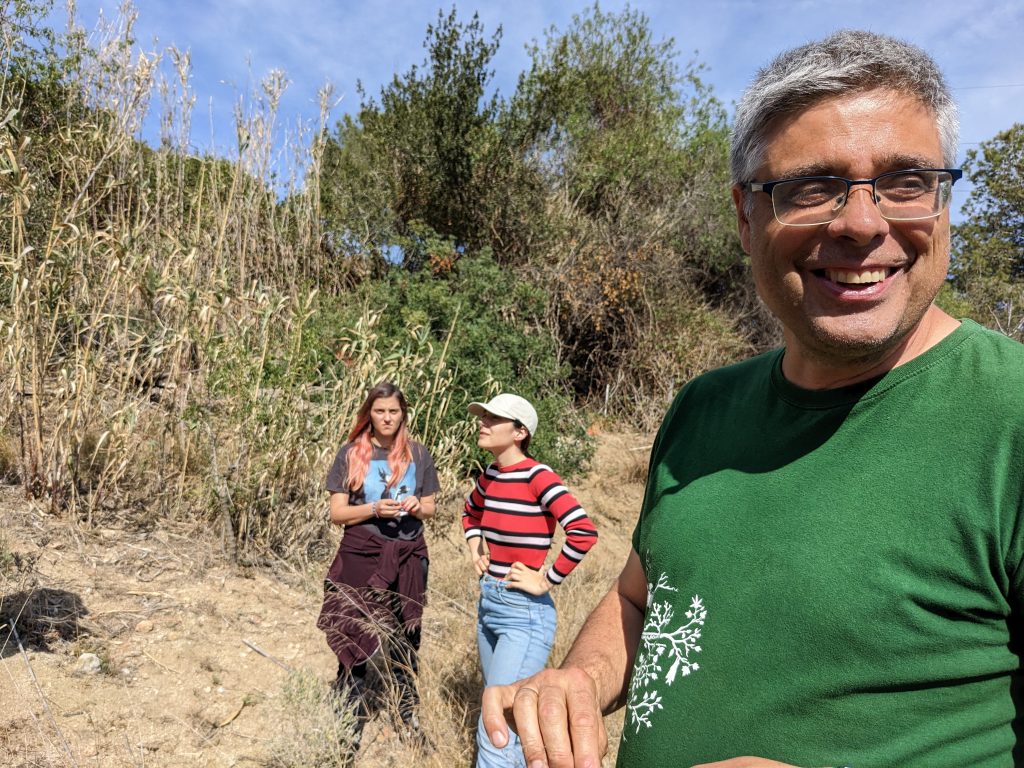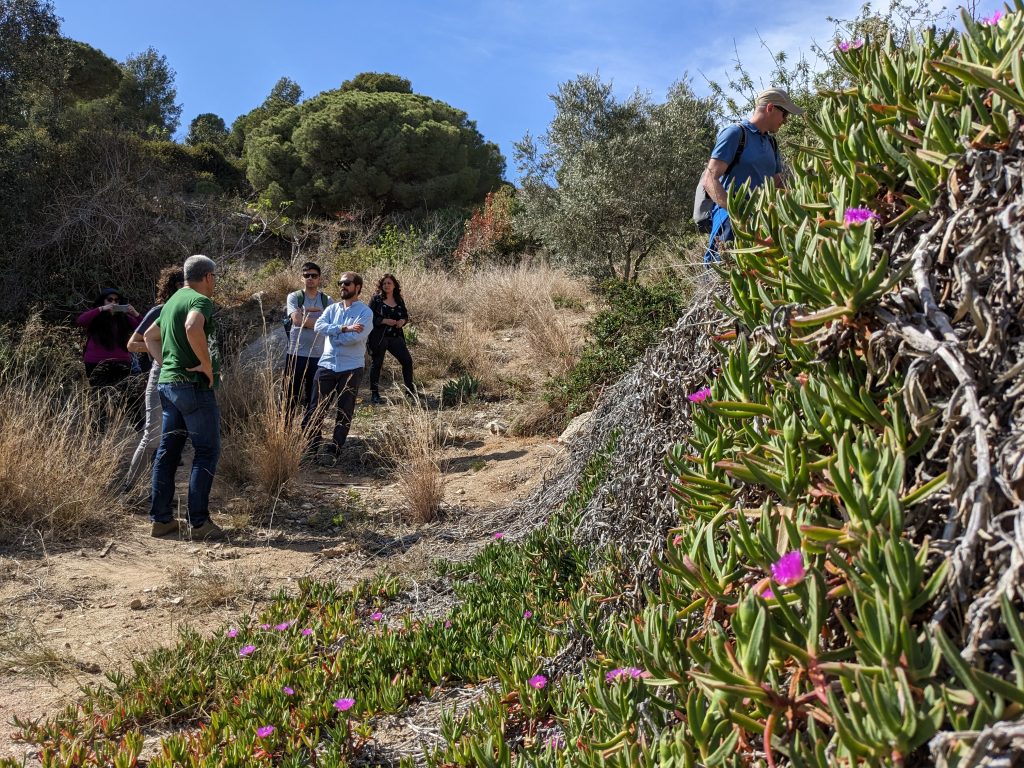In the autumn of 2023, the Uforest project will be simultaneously planting trees at four sites, in Milan, Brașov, Dublin and the metropolitan area of Barcelona, for educational purposes. In the Catalan case, the idea is to restore a plot of degraded land in the Serralada de Marina natural park, as a pilot educational woodland, which, in turn, could serve as a pilot test for learning how to manage and maintain peri-urban forests. This “open classroom” will help raise awareness of the importance of protecting, conserving and living in harmony with urban nature .
Measuring approximately three hectares, the experimental plot of land lies in the municipal territory of Badalona. It is easily accessible and looks out over Barcelona and the Mediterranean. It is home to a range of exotic species, shrubs and fruit trees, all currently surrounded by refuse. When selecting the species to be planted there, it will have to be borne in mind that the soil is acidic and that the land’s natural gradients are conducive to the central part of the plot receiving water.
An Erasmus+ project, Uforest seeks to promote knowledge of urban forests as a nature-based solution that can help tackle the social and environmental challenges facing cities. CREAF is one of the partners carrying out the project and has led the production of two reports on which its training programme is based: Uforest Training Needs Assessment and Stakeholder Analysis and EU Innovation Blueprint: Analysing factors influencing innovation within Urban Forestry.

“The Uforest project’s challenges of training and connecting urban biodiversity experts are in line with the investments the EU and the national and local authorities have made to improve such biodiversity.”
Mariona Ferrandiz, CREAF and UAB researcher.
Public awareness for the protection of urban forests
The work to be undertaken in the Marina mountains “would involve planting and uprooting,” in the words of Joan Pino, CREAF’s director and a lecturer at the Autonomous University of Barcelona (UAB), and would be carried out in a participatory manner. The approach taken will be guided by a citizen science methodology geared to helping generate interest and understanding of the restoration process by highlighting the ecosystem services returning the plot to nature can provide. Additionally, it has been proposed that an initial workshop be run as a forum for co-creation to facilitate cooperation and consensus among the people involved.
A peri-urban forest such as that of the Marina mountains has numerous environmental, social and economic benefits for neighbouring towns and cities. As different Uforest case studies show, metropolitan forests are havens for biodiversity, have a positive effect on mental health, and offer spaces for social recreation, sport, and even growing food, among other services.





Challenges for urban forestry: fires, organized gangs, and boars
With a view to putting theory into practice, the Uforest project celebrated its third year of existence by holding a public presentation and a workshop on urban forestson 3 and 4 May. For the first time, CREAF, the UAB and Agresta, three of the project’s partners, brought people from different geographical locations and disciplines from the public and private spheres together to discuss the challenges and opportunities entailed by peri-urban forests,natural spaces in the midst of urban fabric.
Pablo Navascués, a specialist from Barcelona Provincial Council, talked about the social, economic and ecological problems and the difficulties related to regulations and urban development involved in managing the Serra de Collserola natural park , a green space hemmed in by nine different towns and cities in which four million people live, 20 thousand of them within the boundaries of the park itself. “The danger of the hypothetical Great Fire that could reduce Collserola to ashes in seven hours is the threat posed to the civil protection of the park’s inhabitants,” said Navascués. He explained that the main conflicts the park’s management involves stem from the illegal exploitation of mastic by organized gangs, invasive plant species, the overabundance of boars, a lack of public funding, and raising awareness of the importance of placing restrictions on cyclists and of reducing biomass to prevent fires. “Managing an urban forest is not profitable, but it is an important service for society,” he remarked. He also noted that while professionalizing the sector means an increase in costs, doing so is an opportunity to enhance the dignity of people at risk of social exclusion.
The management of an urban forest is not profitable, but it provides a social service.
At the same event, Cauler executive Miguel Ángel Fernández gave examples of good practices by explaining how to maximize the ecosystem services of the peri-urban and riverbank forests of Cuenca. In addition, CREAF researcher Corina Basnou, Föra CEO Iñigo Lizarralde, and Ricardo Fernández from Ecoacsa’s technical team presented different tools for, respectively, understanding social perceptions of the pollution and management of green areas; detecting and making inventories of urban trees; and measuring the social, environmental and economic value of cities’ natural capital and green infrastructure.


“The workshop was an opportunity to share experiences and analyse urban forestry’s potential for making our cities better places to live. It was a creative setting for exchanging ideas and learning about pioneering urban forest management projects.”
Jorge Olivar and José Luis Tomé, Agresta S. Coop.



